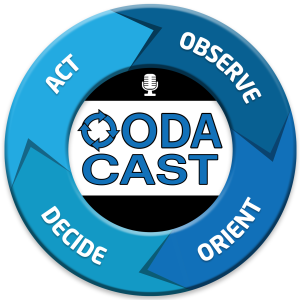
Episode 69: Junaid Islam on Zero Trust Architecture
 2021-06-04
2021-06-04
In this OODAcast we provide insights into Zero Trust architectures from an experienced practitioner, Junaid Islam.
Junaid is a senior partner at OODA. He has over 30 years of experience in secure communications and the design and operations of highly functional enterprise architectures. He founded Bivio Networks, maker of the first gigabyte speed general purpose networking device in history, and Vidder, a pioneer in the concept of Software Defined Networking. Vidder was acquired by Verizon to provide Zero Trust capability for their 5G network. Junaid has supported many US national security missions from Operation Desert Shield to investigating state-sponsored cyberattacks. He has also led the development of many network protocols including Multi-Level Precedence and Preemption (MLPP), MPLS priority queuing, Mobile IPv6 for Network Centric Warfare and Software Defined Perimeter for Zero Trust. Recently Junaid developed the first interference-aware routing algorithm for NASA’s upcoming Lunar mission. He writes frequently on national security topics for OODAloop.com.
We discuss Junaid's approaches to zero trust networking. His approach is to always start with the needs of the business. From there he works with organizations to ensure a comprehensive assessment of the existing architecture is done, since every organization already has some elements of a zero trust approach in play. Junaid highlights that one of the biggest mistakes he sees organizations make is skipping this gap analysis and moving right to purchase of products or services. This frequently ends up being a negative to the project.
Today's global businesses operate with many partners, providers and suppliers and zero trust designs must be established with this unique mix in mind to optimize the use of technology in support of core business needs.
Junaid provides insights into many of the products he encounters in zero trust architecture work.
Related Reading: Cybersecurity Sensemaking: Strategic intelligence to inform your decisionmaking
The OODA leadership and analysts have decades of experience in understanding and mitigating cybersecurity threats and apply this real world practitioner knowledge in our research and reporting. This page on the site is a repository of the best of our actionable research as well as a news stream of our daily reporting on cybersecurity threats and mitigation measures. See: OODA Cybersecurity Sensemaking
From Solar Sunrise to Solar Winds: The Questionable Value of Two Decades of Cybersecurity AdviceWhile the Ware Report of 1970 codified the foundations of the computer security discipline, it was the President’s Commission on Critical Infrastructure Protection report of 1997 that expanded those requirements into recommendations for both discrete entities as well as the nascent communities that were growing in and around the Internet. Subsequent events that were the result of ignoring that advice in turn led to the creation of more reports, assessments, and studies that reiterate what was said before. If everyone agrees on what we should do, why do we seem incapable of doing it? Alternately, if we are doing what we have been told to do, and have not reduced the risks we face, are we asking people to do the wrong things? See: From Solar Sunrise to Solar Winds: The Questionable Value of Two Decades of Cybersecurity Advice
If SolarWinds Is a Wake-Up Call, Who’s Really Listening?As the U.S. government parses through the Solar Winds software supply chain breach, many questions still remain as to the motive, the entities targeted, and length of time suspected nation state attackers remained intrenched unseen by the victims. The attack stands at the apex of similar breaches in not only the breadth of organizations compromised (~18,000), but how the attack was executed. See: If SolarWinds Is a Wake-Up Call, Who’s Really Listening?
Executive Level Action In Response to Ongoing Massive Attacks Leveraging Microsoft VulnerabilitiesThis post provides executive level context and some recommendations regarding a large attack exploiting Microsoft Exchange, a system many enterprises use for mail, contact management, calendar/scheduling and some basic identity management functions. This attack is so large and damaging it is almost pushing the recent Solar Winds attacks off the headlines. Keep in mind that till this point, the Solar Winds attack was being called the biggest hack in history. So this is a signal that the damage from this one will also be huge. See: Executive Level Action In Response to Ongoing Massive Attacks Leveraging Microsoft Vulnerabilities
More Episodes
Create your
podcast in
minutes
- Full-featured podcast site
- Unlimited storage and bandwidth
- Comprehensive podcast stats
- Distribute to Apple Podcasts, Spotify, and more
- Make money with your podcast
It is Free
- Privacy Policy
- Cookie Policy
- Terms of Use
- Consent Preferences
- Copyright © 2015-2024 Podbean.com





